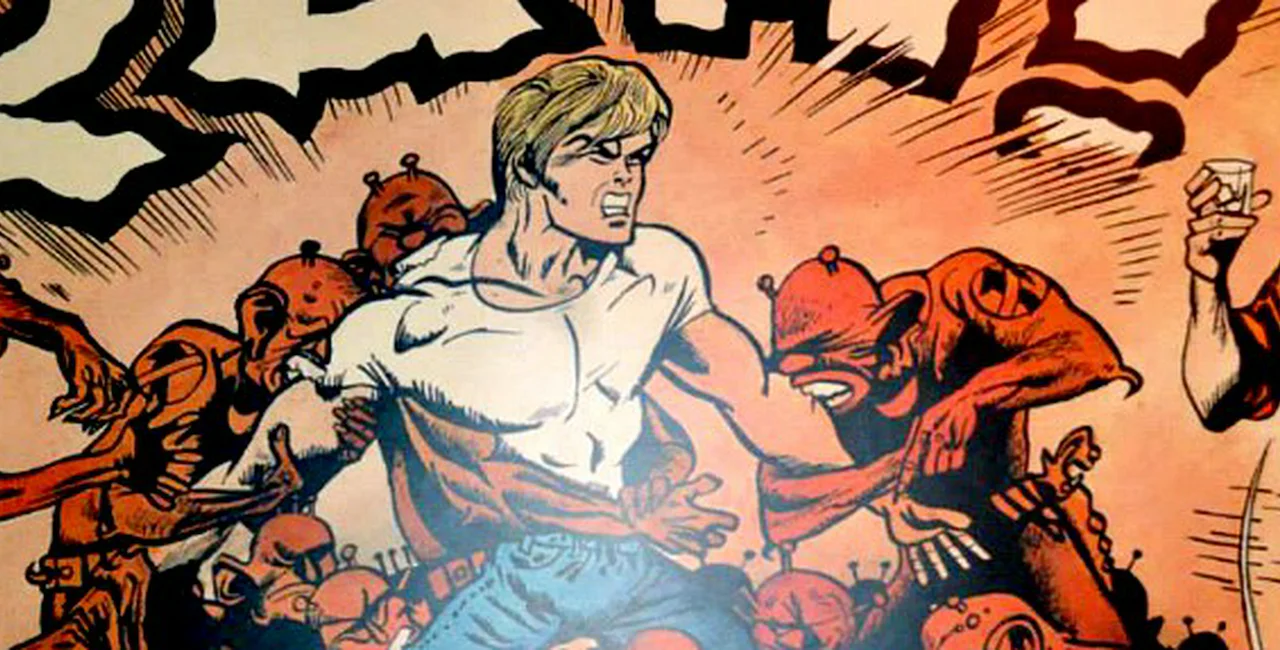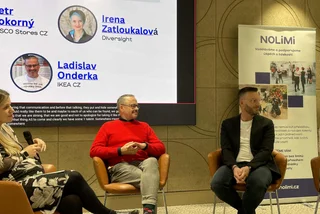Long gone are the days when Superman and his ilk were seen as below art and solely for children. In today’s world, comics (and their more “literary” form, the “graphic novel”) are finally taken seriously. But what you might not know is that here, in the Czech Republic, there has been a long, fascinating history of comics, one that was actually formed independently from (though influenced by) the American comic scene.
From the bombastic drawings of Kája Saudek, to Jaroslav Foglar’s innocent serials about a gang of young boys, to the recent work by Jaromír Švejdík (known as ‘Jaromir99’) on the dark graphic-novel-turned-movie, Alois Nebel, comics are an essential but often overlooked part of Czech’s literary and artistic culture in the last century.
In recent years, there have been several major retrospective exhibits looking at the Czech comic scene, its history and its future, including one at DOX Gallery and another at the Meet Factory. This year’s Komiks Fest continues to celebrate that legacy from October 29-Nov 2.
An Arrested Development
I spoke with Pavel Kořínek, a professor at the Institute of Czech Literature with extensive knowledge of Czech comic history to get a sense of the scope and style of Czech comics. Pavel was one of the curators for an exhibit at the DOX Gallery, “Signals from the Unknown”, which aimed to give a unique perspective into the Czech comic scene, from 1922 to 2013.
“To me, the tradition and evolution of Czech comics was something that is marked by the many times it was violently stopped at several points in its development,” he tells me at first. “You could say it had several beginnings.”
The first beginning of Czech comics can be traced back to the middle of the 18th century, in Bohemia, where visual arts were employed in satirical magazines. Written independently of the American tradition of comics, these worded drawings didn’t even feature the bubbles that are so familiar today; instead, text was drawn as a caption beneath each comic frame. Czech comics began in earnest in about 1930, in a popular magazine called Mladý hlasatel (Young Herald), which published the work of Jaroslav Foglar, who wrote the popular series, Rychlé šípy (Fast Arrows).
The only a few comic serials would continue uninterrupted, in the ensuing decades of censorship and communism, were inoffensive comics, such as the harmless Čtyřlístek (Four-leaf Clover), a popular comic by Jaroslav Němeček about four cute, anthropomorphized animals (a cat scientist, pig athlete, a hare, and a dog).
As Pavel tells me, “The authorities depicted the comics as harmful, something that would be dangerous for children.” As part of the increasingly ridiculous prescriptions for comics under Communism, speech bubbles were, for a time, considered bourgeois and ‘American’, and banned from use in comics.
The clear clash between how crazily the Communist party viewed comics as an indicator of bourgeoisie American influence, along with how convoluted and arrested the development of Czech comics was, can be seen clearly in the treatment of famous Czech author, Jaroslav Foglar. Jaroslav Foglar was one of the founding members of the Czech comic scene. With the help of cartoonist Jan Fischer, he created the cult classic, Rychlé šípy (or, “Fast Arrows”). The comic covers the semi-realistic adventures of five boys around their fictional hometown of Stínadla (the characters are well-known by most in the Czech Republic and Slovakia).
This essentially harmless comic (think roughly a Czech version of “Archie” crossed with “The Hardy Boys”) has the dubious distinction of being censored on three different occasions–first during the Nazi occupation in 1942, then again after the Communist takeover in 1948. Then, after letting Foglar publish the comic again for sometime, the now stricter Russian-supervised government again declared Foglar’s work to be too indecent for young people and re-banned it.
Kája Saudek
While most Czech comics of the last century were, indeed, for children as Pavel said, Kája’s prolific work in the last century was definitely not intended for a young audience. Featuring a dark atmosphere and highly sexual encounters, Kája drew some truly amazing, provocative comics for much of the 21st century, up until a tragic accident left him in a coma since April 2006. I’d heard many good things said about Saudek’s work from one of my Czech friends, and after learning that there was a Saudek museum in the center of Prague, I decided to check it out.
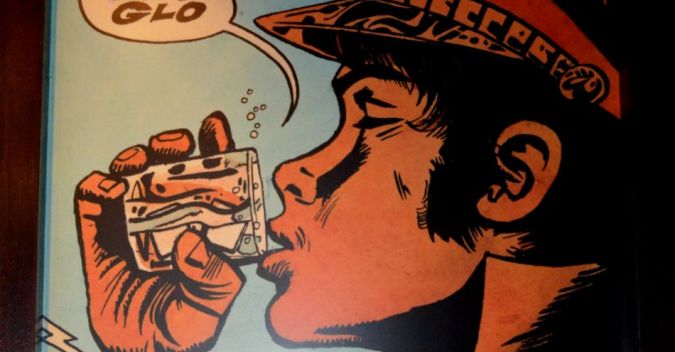
Above Comics Bar & Music Club Batalion, a tourist-frequented bar right by Wenceslas Square, at Října 3 (by metro station, Můstek) is the Kája Saudek Museum. When I went, it was devoid of people–my guide, Murin, a self-confessed Saudek fanatic and independent comic artist himself, explained that while there are brief spates of visitors in the summer, hardly anyone comes in the winter. Inside the museum itself, I was very pleasantly surprised.
Firstly, Saudek’s style is unique and unmistakably brilliant–he renders his drawings with extravagant colors and bold, but precise crosshatching. But what really astonished me, more than what he drew, was when he drew it. While Saudek’s comics changed in terms of style, he continued to draw obscenely sexual and violent comics, even at the height of the Communist era, when artists and comics as harmless as Foglar were being blacklisted for far less controversial work.
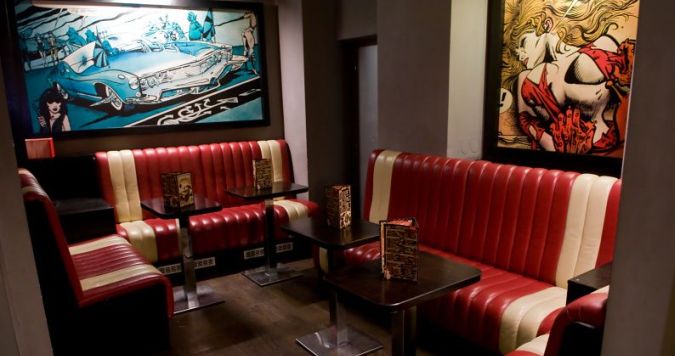
One of the interesting motifs of his comics is that many times, the female lead (or villain), is painted in the likeness of his wife (albeit scantily clad and with an overly generous bosom) in many of his stories. Many of his drawings were used as movie posters, though he also drew and wrote many independent comics throughout his life, along with several paintings. It seemed that Kája did whatever he wanted artistically, without giving too much of a damn. Other than his very famous series about a gang of bandits, called Lips Tullian, Kaja also created a grand opus of work, in a serial known as Muriel a andělé (Muriel and the Angels). The series culminated in 1969, with an episode called Muriel a oranžová smrt (Muriel and the Orange Death).
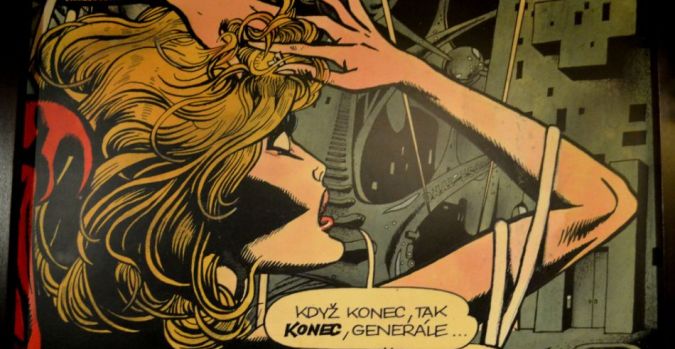
One year after the Russian invasion and occupation of Czechoslovakia, when dissidents were being jailed all across the country for anything perceived as even remotely inflammatory, Kája had the artistic audacity to publish a bold, unequivocal satire of the Russians and the Czechoslovak political climate. Murin described the plot to me in a somewhat reverential tone, “In the comic, the orange aliens that invade Earth are something like the Russians. The aliens watch people to make sure they behave; if someone says something differently, then they are killed.” After this comic was released, Kája was sentenced to prison for 18 months (considering the political climate–not very surprising). When he came out, he went back to drawing, but was forced to switch formats and mediums to avoid further censorship.
As Murin says, “His whole life was very radical. But after the revolution of 1989, American comic books were read throughout the country and many people forget Saudek’s art. I think that is a sad story.”
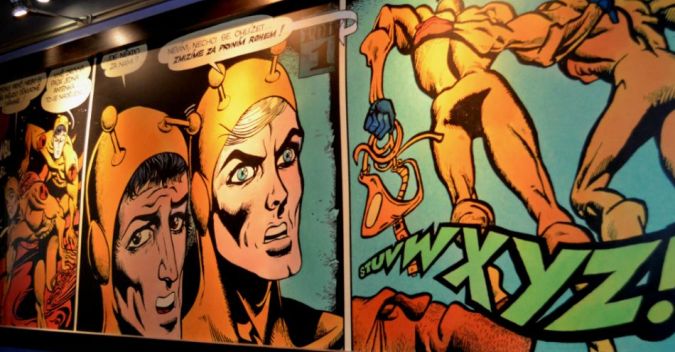
For those who are interested, the Kája Saudek Comics Museum is open from 12:00 to 21:00, seven days a week (during winter Wednesday-Sunday). You can find it at 28.ŘÍJNA 3, Prague 1( metro st.Můstek), right next to the end of Wenceslas Square. If you are interested in checking out some Czech comics, take a look at the store Comics Point, which you can find in two locations–at Anglická 14, which is open from Monday to Friday, from 11:00-19:00, and on Saturday from 10:00–15:00. The second location is at Vinohradská 111, and is open from Monday – Friday, from 10:00-18:00.
Recommended publishers, e-shops and stores:
**
Who is your favorite Czech comic artist? Share below!












 Reading time: 6 minutes
Reading time: 6 minutes 